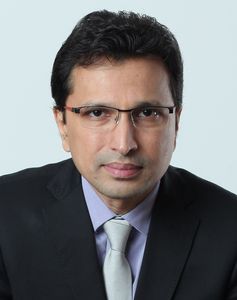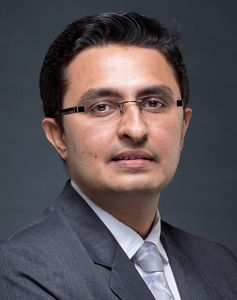Mutual funds have taken off in a big way in the past few years. The surge started when central banks slashed interest rates during the Covid-19 pandemic, making investors chasing high returns turn to capital markets, either investing directly or via mutual funds. Interestingly, this phenomenon has survived the high interest rate phase of the past two years, and more and more investors are investing in equity now.
The latest data from Association of Mutual Funds of India (AMFI), says average assets managed by the Indian mutual fund industry was Rs66.04 lakh crore in August 2024, a 40 per cent jump over August 2023 when it was Rs46.94 lakh crore. Equity-oriented schemes now account for about 60 per cent of the industry assets, up from 52.7 per cent in August 2023.
Between January and August 2024, the total net inflow into equity mutual funds has been around 02.48 lakh crore. Just in August, some 64 lakh new systematic investment plans (SIP) were registered and the monthly SIP contribution hit a new high of Rs23,547.34 crore. While August was the 42nd consecutive month of positive equity inflows, one category of funds seems to have attracted a lot of interest this year―sectoral/thematic funds.
Sectoral funds are equity mutual funds that focus on businesses operating within a specific industry, like technology, health care, defence, energy, automobile, or financial services. There are funds that focus on specific themes like consumption, manufacturing, infrastructure or clean energy as well.
Such funds have received around Rs1.03 lakh crore in net inflows between January and August. What is driving this huge interest?

On the one hand, many savvy investors are seeking newer investment ideas. On the other, India’s economy is growing and government policies are opening up opportunities for newer sectors. That has driven the fund houses to launch more such funds targeting sectors and themes. “The mutual fund industry is thriving, riding the wave of opportunities across the Indian economy; hence we are seeing thematic and sectoral launches looking to capitalise on emerging opportunities and trends,” said D.P. Singh, deputy managing director and joint CEO of SBI Mutual Fund.
SBI MF is the country’s largest asset manager with average assets under management (AUM) of over 09.88 lakh crore in the April-June quarter. The fund house has launched several sectoral NFOs (new fund offerings) this year, the latest being the SBI Innovative Opportunities Fund, towards the end of July. The idea behind this fund was to invest in equity and equity-related instruments of companies that seek to benefit from the adoption of innovative strategies and themes. In February, SBI MF launched the energy opportunities fund and in May, the automotive opportunities fund.

“In an economy like India which is still evolving, opportunities exist across the spectrum with new industries mushrooming,” said Singh. “Today, for example, EVs are growing, as the ecosystem around will evolve with technological advancements. So energy as a theme is a big opportunity. There are similar opportunities across industries, and we will launch more funds if necessary.”
Several other fund houses have also cashed in on this sectoral theme. In August, for instance, Aditya Birla Sun Life AMC launched the defence index fund, aiming to take advantage of the growing defence sector. Axis Mutual Fund has launched the Axis Consumption Fund, aiming to provide a diversified portfolio that reflects the broad spectrum of consumption-driven sectors like fast moving consumer goods, auto, telecom, real estate and health care.
“As our aspirations grow and spending power increases, companies in this space are positioned for sustained growth,” said Ashish Gupta, chief investment officer of Axis AMC. “The Axis Consumption Fund offers investors the opportunity to participate in this unfolding trend and aims to build a robust portfolio that captures this dynamic growth.”
Some themes did quite well in the past year. Mahesh Patil, chief investment officer at Aditya Birla Sun Life AMC, said that PSU (public sector undertaking), defence, auto and energy had given excellent returns, thus creating more interest in themes.
It is worth noting that in order to bring uniformity, the Securities and Exchange Board of India in 2017 issued clear definitions for each fund category like large cap, small cap, mid cap and multi cap. As per the regulator’s guidelines, a fund house can have only one scheme in each category, although there are exceptions like index funds or exchange traded funds and sectoral/thematic funds. With most large fund houses already having schemes in the key categories, thematic funds and even index funds have offered new growth opportunities.
“From a mutual funds side, these are the only areas where you can add new products. Most mutual funds already have products in the traditional baskets. That is also fuelling new launches and the excitement in the thematic side,” said Patil.
Investing in thematic and sectoral funds, however, comes with several risks that investors need to keep in mind. “If you are evaluating sector and thematic funds, there are five challenges to be addressed. Performance is cyclical, timing is difficult, cost of mistiming is very high, unlike diversified funds, a ‘buy and hold’ approach may not work, and even if you get everything right, you are likely to be under-allocated,” said Jiral Mehta, senior research analyst at FundsIndia.
Many investors look at the performance of 1-2 years and then make their investment choices accordingly. But, they must remember that sectors do go through their cycles and what delivered last year may not deliver this year.
For instance, infrastructure mutual funds delivered anywhere between 61 per cent to 75 per cent over the past one year. But there have also been years when they delivered negative returns. In 2018, their annualised returns were negative 15-25 per cent. Many funds in the infra space had gained traction just before the 2008 global financial crisis. But after stellar returns initially, many of them went through a phase between 2008-14 where even their three-year and in some cases even five-year trailing returns were negative.
As far as sectoral or thematic funds go, one should stick to actively managed funds, given the fact that the stocks are carefully chosen and sector calls are taken by the fund manager, so an investor need not worry about the timing, said Mehta.
Investing in sectoral funds can be appealing for certain types of investors, but it is important to understand who they are best suited for and how they compare to broader strategies like large caps or flexi/multi caps, says Singh.
“These funds are suitable for experienced and nuanced investors who understand the impact of the sector/theme on the overall economy and how its growth can lead to potential gains in their portfolios. So, while diversified offerings are a must-have in the portfolio, those who have a higher risk appetite and would like exposure to a certain theme or sector can invest with a long-term investment horizon,” said Singh. According to him, investors should ensure diversified offerings occupy a larger part of their portfolio, along with these offerings in a satellite portion for potential boost to overall returns.
Most investors are better off investing in diversified equity funds where patience and a long-time horizon act as an advantage. “For experienced investors with a high-risk appetite, wanting to explore sector and thematic investing, we would suggest starting small with a limited exposure (less than 20 per cent) and increasing it over time as you gain experience and expertise,” said Mehta.
Index funds, which track a particular underlying index such as Sensex or NSE Nifty Next 50 or small cap 50 with little active fund manager decision making, have also gained traction in this backdrop. Fund houses are also seen taking innovative bets in index funds.
DSP, for instance, recently launched the Nifty top 10 equal weight index fund. Currently equity markets are at a high and valuations in several stocks and sectors appear expensive. In this context, it is wise to invest in areas showing relative underperformance, where there is a margin of safety and good growth potential, said Anil Ghelani, head of passive investments and products at DSP Mutual Fund.
“While there is growing interest in small and mid-cap stocks, the largest and mega-cap stocks appear to be trading at relatively more attractive valuations. Over the past four years, the market has witnessed significant depolarisation, leading to the underperformance of the top 10 stocks compared to broader indices. This relatively lower valuation and margin of safety could be seen as a good opportunity,” said Ghelani.
One reason passive funds (index funds and exchange traded funds) have generated interest is that they have extremely low cost. For instance, annual expense ratio (annual fee that fund houses charge for managing the fund) of index funds linked to the Nifty50 ranges between 0.2-0.3 per cent, while the actively managed large-cap funds have an expense ratio of about 1 per cent.
Passive funds are also more straightforward, providing investors with a clear understanding of their risk and return outcomes, said Ghelani. Although the overall AUM of passive funds is still low compared with active funds, in the large-cap category, for instance, index funds and ETFs have seen larger inflows compared with active funds over the past three years.
ETFs and index funds now account for around 17 per cent of the total MF industry AUM and that proportion is likely to increase to 25 per cent in next 3-5 years.





